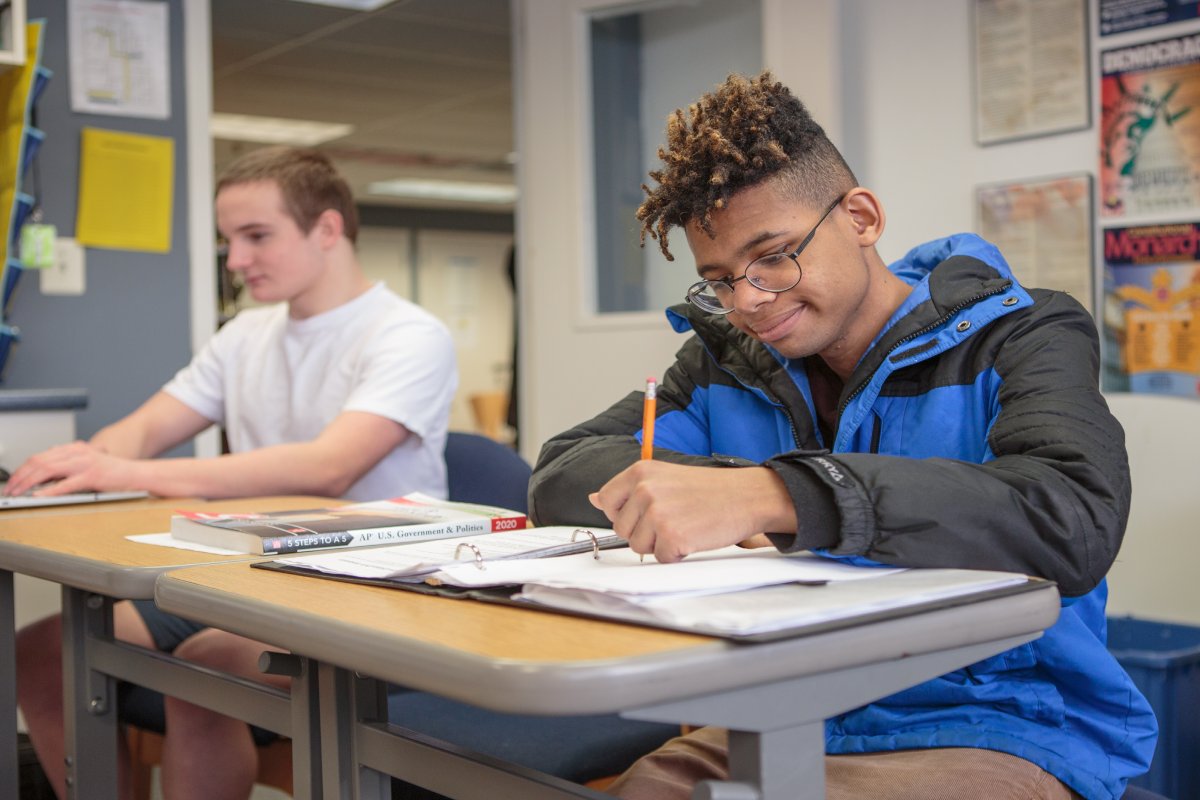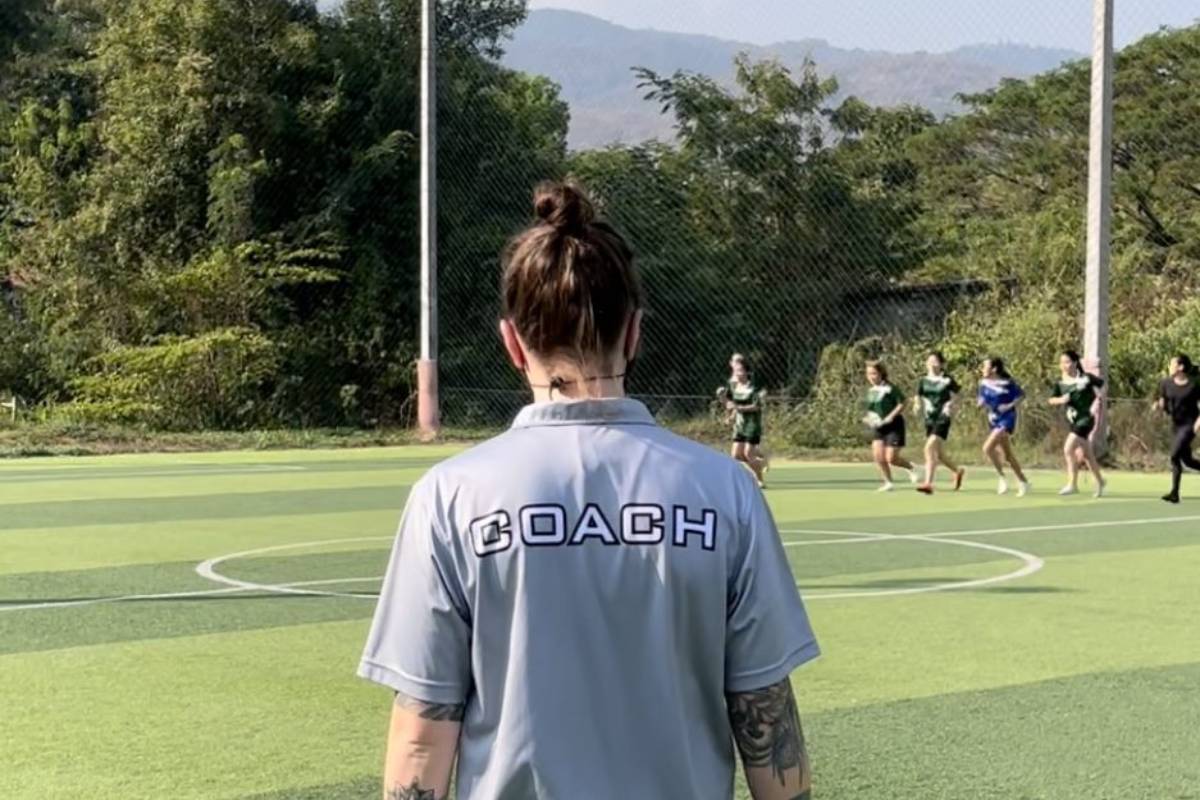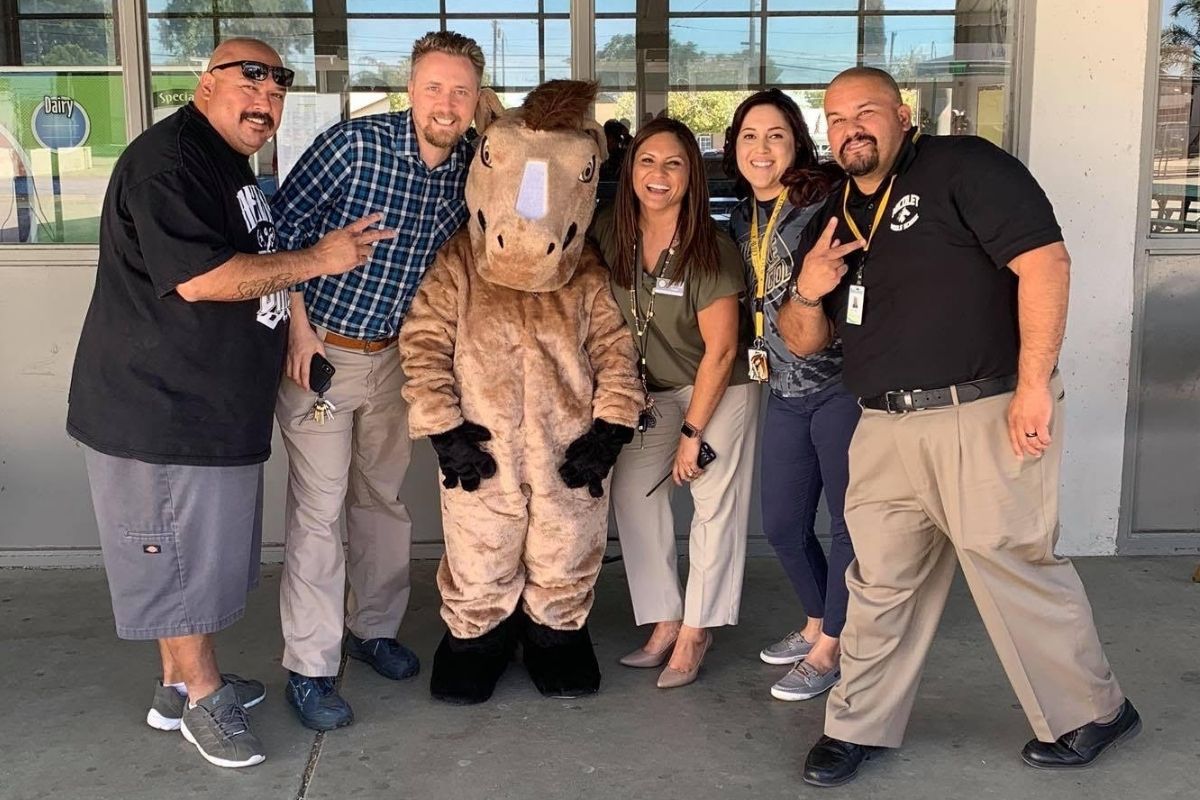Learning Resilience: Lessons from Four Women in Leadership
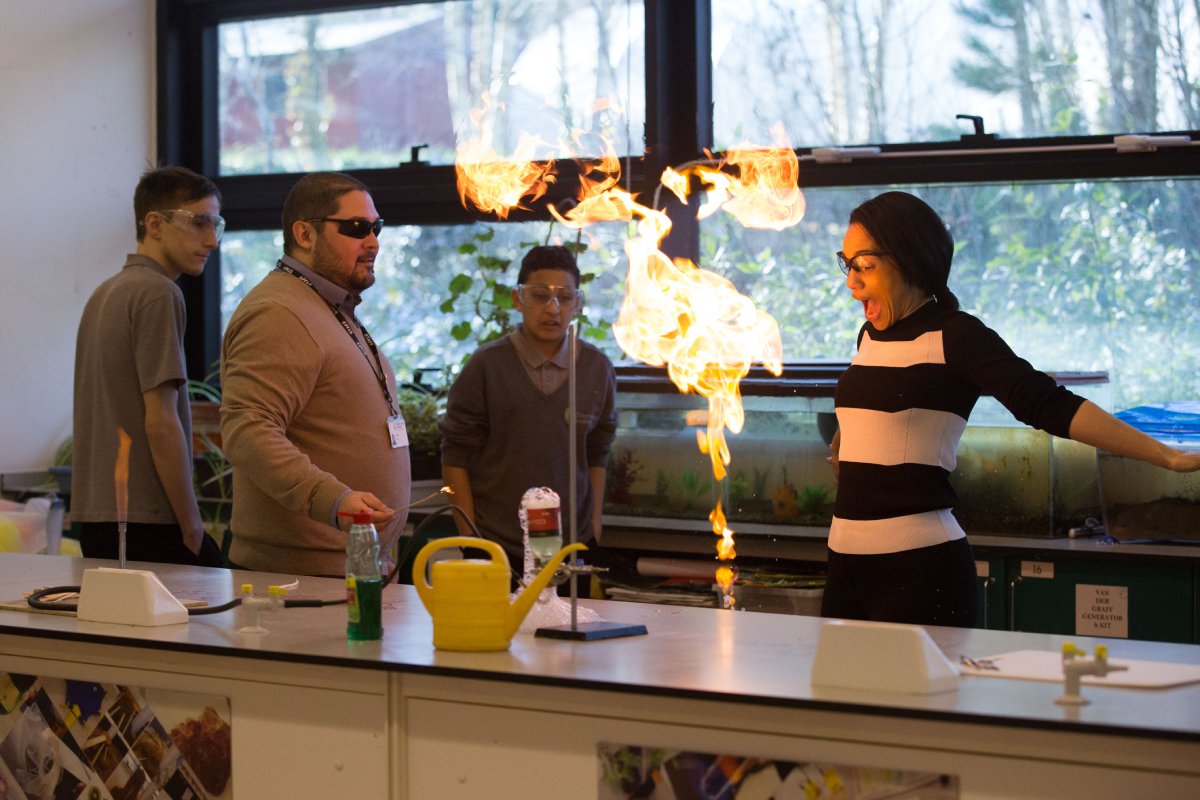
As a woman living in the western world, I’m incredibly fortunate to have grown up in an era when representation in leadership is emphasized. While there is considerable work to be done—evidenced in North America not only by the disproportionate percentage of men to women in leadership positions (McKinsey & Company, 2021; Osler, 2020) but also by the need for such reports on a regular basis – it is important to recognize the progress that has been made.
In 1999, after seven decades of naming a “Man of the Year,” TIME Magazine pivoted to selecting a “Person” of the year. Despite the change in title, the choices were too often the same, inspiring the writers at TIME (2020) to retrospectively name 100 “Women of the Year.” When I first reviewed this list, I was immediately drawn to well-known names that have come up in past conversations with my students, such as Ruth Bader Ginsburg (1996), Michelle Obama (2008), and Malala Yousafzai (2009). As I reflected on the contributions of these three women, and the importance of teaching students about every one of the women leaders on the list, I wondered about the impact of seeing women in leadership on a more micro scale. Of course, my students would be inspired by RBG’s efforts to advance women’s rights, Michelle Obama’s impressive health initiatives, and Malala’s activism and advocacy; but I also wondered, how have my students been impacted by women leaders whom they actually know? How have I been impacted by women leaders whom I actually know?
Perhaps taking this notion of women in leadership for granted, I didn’t think twice about the fact that most of the leadership team at the Chiltern Way Academy (CWA), the school where I began my teaching career, are women. What’s more is that this is an environment where resilience is a prerequisite. To provide some context, the Chiltern Way Academy is a specialist school in Buckinghamshire, England. With both primary and secondary schools, CWA has four campuses serving students (aged four to nineteen) with social, emotional, and mental health needs as well as autism spectrum disorder. Many students also have additional diagnoses of learning disabilities and, as a result, require highly specific support. Fortunately, the school has the resources to meet these students’ needs – something I have always felt is lacking in Ontario, Canada, where I currently live. I learned a lot teaching there – much of it from my students. But when tasked with writing about resilience, it is four of my superiors, all of whom are women, that come to mind. So, what can we learn from women in leadership about resilience? Before I answer this question, allow me to introduce you to the women who continue to shape the way I think about the term.
Linda Switzer
The first time I met Linda was when she interviewed me for a job in January of 2017. At the time, Linda was the Academy’s Business Director, though she has since taken on roles including Chief Financial Officer and now Chief Operations Officer. As I sat across from Linda and Ian, the Chief Executive Officer, I was amazed by their ability to be both lighthearted and serious at the same time. Charmed by their accents – Scottish and Irish, respectively – I listened intently as they told me about the joys of working at the Chiltern Way Academy – but also the challenges. They finished each other’s sentences but also pointed out how their perspectives differ; their communication was seamless and their banter harmless. Whilst Linda diligently wrote down every word I said, I knew she was actively listening. In fact, I am not sure that I know a better listener than Linda, who interviews as though it’s both an art and a science. Years later, when my own career would shift toward teacher recruitment, training, and retention, I asked Linda what her secret was for successful interviews; specifically, I wanted to know how she and Ian have the energy to conduct every interview as though it’s the most important one. Due to the nature of her job, Linda’s interactions with the students are limited, so I was taken aback when she told me that the trick was to “keep the kids top of mind.” She explained that she wouldn’t be able to sleep at night without knowing she put the best possible person in front of the students every single time. Though no one would quite know it, Linda’s high standards have set the bar for almost every hire.
Linda would be the first person to tell you that she is not the one to come to when you need some TLC. I disagree. There have been, in fact, many times that I have come to Linda when this is precisely what I have needed. Despite her tendency to be direct, Linda listens without judgment and she offers advice without assuming. But most importantly, she allows the people around her to learn things themselves so that they can become better – even when this takes longer. While some might see this type of leadership as tough, I see it as patient. I also see it as the most effective means of authentic learning.
Lauren Fessey
In August of 2017, Lauren Fessey was tasked with touring me around the school at the end of the summer holiday. She explained to me that she was a teaching assistant, but she delivered the science curriculum to several classes. I learned that, in England, many teachers are “unqualified” in the sense that they haven’t gone through a formal training program, but they can qualify through a direct assessment route after gaining classroom experience. As she explained, I recall thinking about how teaching science can be challenging for any teacher, given the need to incorporate inquiry-based and hands-on learning, but especially for a teacher of students with special needs, all of whom are likely to be learning at different levels. An early career educator as well, I am amazed by her ability to both learn and deliver the curriculum in such a unique setting. Despite the many demands on her time, Lauren took me under her wing and, in a sense, I became her student, too.
Over the next few years, I watched Lauren flourish as the born leader that she is. Lauren quickly qualified as a teacher and took on all of her own classes. Within a matter of months, she was delivering training for both teachers and teaching assistants, primarily in her area of expertise – autism. However, it wasn’t until she applied to be Assistant Head of Campus that I saw her resilience truly tested. Lauren poured herself into the application process and interview, excelling in all aspects but ultimately needing to acquire more teaching experience before moving forward. Lauren later told me that, in all of her years at CWA, this was her toughest moment. Unsurprisingly, Lauren landed the job a year later – an opportunity she wouldn’t have had without her resolve and resilience.
Charlene Martin
After the first few weeks of September, I arranged to meet with the Head of Maths as I was struggling to engage my students with the subject. Enter Charlene Martin. As was the case with Lauren, I was not Charlene’s responsibility, but she made time for me anyway, as though I was a student myself. I immediately opened up to Charlene about my own reluctance to teach secondary maths, and how I worried I didn’t know the curriculum well enough to support my students. I was shocked to learn that Charlene is entirely self-taught. She started at CWA as a teaching assistant in 2012 and studied to become a teacher before progressing to Department Head, Assistant Head, Deputy Head and as I write this now, Head of Campus. As we sat in her classroom in September of 2017, however, Charlene decided that, even though I worked at a different campus, miles away, she would take me on as a mentee. During her hours without students – which are few and far between – Charlene travelled across the county so she could give me real time feedback on my teaching.
Recently, Charlene told me that she battles with self-doubt on an ongoing basis. She says that it plagues her, but it also keeps her grounded. She knows that too much would tip her over but just enough helps keep her feet firmly planted on the ground. Charlene’s ability to be both humble and self-assured helps her to stay resilient during the most difficult of days.
Sarah Andrews
I was only in England for two years, but one of my greatest regrets is that I didn’t spend more time with Sarah Andrews. When I first met Sarah, she was the Head of the Transition Phase, a department that helps secondary students adjust to leaving their primary schools. Sarah isn’t a primary teacher, so she was constantly championing her team for their expertise. Under her guidance, we operated as one unit, collaborating to create a truly unique curriculum that suited our particular students at the time. During my second year of teaching, Sarah joined our campus as Deputy Head, where she is Head now. Within a few weeks, Sarah became “mum” to many of us, especially to those of us who were far away from home. Sarah leveraged her skills as an actual mum (to her two wonderful children) into her identity as a leader. In doing so, she created an environment where her staff felt safe to take risks and develop into stronger teachers. It is in this type of setting that I tend to thrive, as do many of my colleagues.
Despite her administrative duties, Sarah takes pride in knowing every student individually, understanding the barriers that they have to learning, and helping others to put the appropriate supports in place. This is a daily activity that she balances with her own continuing professional development, a Master’s level Headship qualification. Sarah uses her ability to be resilient to keep going even when she second guesses herself, but knows that if she develops this capacity, her staff and students will too.
Lessons Learned
While the focus of this article is four women, I would be remiss if I did not acknowledge that the notion of gender is not so simple. I draw some conclusions based on conceptions of “women” in general, but it is necessary to note that, regardless of where someone sits along the gender spectrum, they, too, can relate to Linda, Lauren, Charlene, and Sarah’s leadership experiences and share in the lessons learned through their resilience.

Lesson 1: Resilience as Advocacy
At the Chiltern Way Academy, the main manifestation of students’ needs is behaviour. As a result, sadly, many of our students have been misunderstood and ultimately excluded by mainstream schools. When I was teaching in the transition phase, I learned this firsthand when we visited incoming students’ primary schools. As the teachers shared stories with me, I immediately realized that the behaviours they were describing were the direct result of the environment – a classroom with 30 children was simply a strain on these students’ sensory and social needs. It was then that I realized that much of what the leadership team does at CWA is advocacy work. In order to provide the students with the level of support needed , the school requires the appropriate resources. For Ian and Linda, this is a highly skilled staff team, state of the art facilities, and the funding to support it all. In fact, what I’ve come to admire most about Linda is the way she quietly goes about advocating for the students; entire campuses have come to fruition as a result of her and Ian’s behind-the-scenes efforts. Linda even defines “resilience” in terms of advocacy, thinking about how the students often have to fend for themselves. If you ask me, it is Linda’s advocacy efforts that have kept her resilient over the course of her 20+ year leadership career.
Resilience is a well-researched topic, particularly in the field of positive psychology (Masten & Reed, 2002; Herrman et al., 2011). But in education, the focus of resilience research has largely been on pre- and in-service teachers (Gibbs & Miller, 2014; Mansfield et al., 2016). While Castro and colleagues (2010) identify advocacy (e.g., asking for appropriate resources) as a form of tenacity and, thus, an indicator of resilience in early career teachers, of the studies that do examine school leadership (Ledesma, 2014; Steward, 2014), few have explored advocacy as a relevant construct. In Linda’s case as a leader, advocacy and resilience go hand-in-hand, suggesting that further research in this specific area is warranted.
Lesson 2: Resilience as Having High Standards
In England, education is monitored by the Office for Standards in Education, Children’s Services, and Skills (Ofsted) with the goal of ensuring that all educational institutions are held to the same high standards (2019). After a thorough inspection, sometimes spanning days, schools are graded on a scale of one to four, with one being inadequate and four being outstanding (Ofsted, 2019). As a Canadian teacher, I find this system surprising – while pre-service teachers in Ontario are observed by an associate teacher and/or professor of teacher education during their practicum placements, there is no such system for monitoring the progress of practicing teachers. As leaders who have all been deemed exceptional by such a system, however, I often wonder if Ofsted is one of the reasons that these four women are all able to maintain such high standards.
Relative to resilience, having high standards can mean a few different things. First and foremost, Linda, Lauren, Charlene, and Sarah have high standards for themselves. Linda, however, points out the danger of perfectionism in this context, explaining that she has had to accept that “good” is often “good enough” to make sure that everything gets done in a day. In this sense, resilience is the ability to meet a high standard and then, move forward.
Another way that the four leaders show resilience through setting high standards is their high standard for the school itself. Charlene reminds me that “Rome wasn’t built in a day” and that patience is a key part of resilience. Passionate about school improvement, Charlene explains that it can take many months to see significant changes, but resilience means being motivated by even the smallest successes.
When I think about Lauren, I think about her natural ability to set a high standard for others. Lauren rises with the sun each day so that she can develop original training and shared resources for staff and students. The standard that Lauren sets for those around her can be seen through her commitment to student success and passion for continuing professional development, the driving forces behind her own resilience.
Finally, Sarah describes her resilience in terms of having high standards for the students. In fact, Sarah explains that the most challenging aspect of the job is that she is constantly thinking of creative ways to support students who do not want to engage. Though this can be rewarding, holding students to a high standard requires substantial resilience; Sarah and her staff epitomize this.
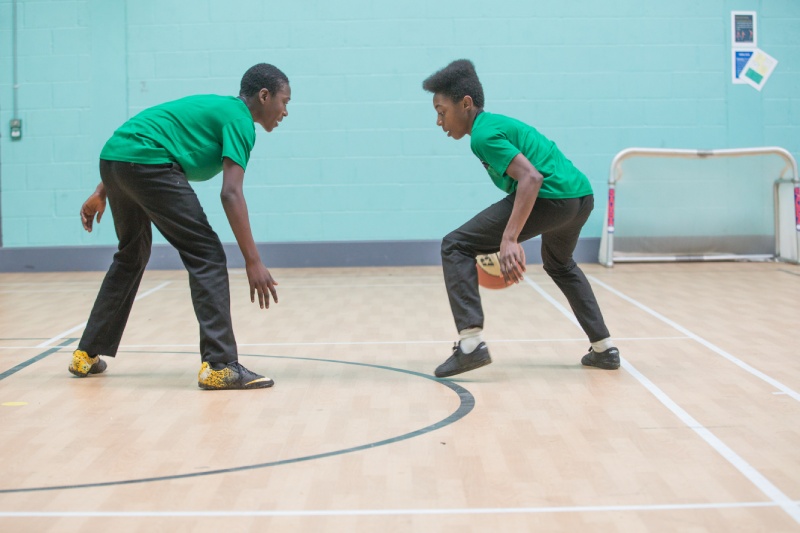
Lesson 3: Resilience as Failing Forward
I have had many experiences working with children, but regardless of their age or ability, they usually have one thing in common: the unshakable belief that mistakes define them. At the Chiltern Way Academy, many students arrive with the misconception that they are “bad” at school because of their experiences in mainstream schools, many of which are not set up for full inclusion. For this reason, having leaders who not only are honest about the mistakes that they make but also how they learn from them is paramount to the school’s success. In this way, Linda, Lauren, Charlene, and Sarah model resilience for the students and staff around them.
Linda describes the feeling of letting her colleagues down after instances of expressing her “passion” for any particular issue, citing her Scottish genes as a cause. She explains, however, that the only way to overcome the feeling is to apologize and learn from it so that you can do better the next time. Similarly, Charlene considers the delicate balance between being self-assured of your actions and also owning your mistakes. She reminds me that mistakes are a natural part of learning but holding on to them can be your “undoing.” As both a teacher and a researcher, Charlene’s emphasis on the importance of mistakes for learning stays with me for days. I think about Jo Boaler and the work that she and her colleagues have been doing to shift our thinking about students’ capacity to learn (Boaler, 2013, 2015; Boaler & Anderson, 2018). I am beyond proud to work with someone who not only recognizes this but embodies it, too. For Charlene and the other teachers at the Chiltern Way Academy, modelling both making and learning from mistakes is a way to practice as well as to teach resilience.
Lesson 4: Resilience as Learning from Others
Related to learning from mistakes as a form of resilience is the ability to learn from those around you. Sarah is a wonderful example of this. Inspired by her stepdad to become a teacher, Sarah left a career as a mainstream secondary science teacher to work at CWA. Wanting to have a greater impact on children who needed it most, Sarah decided to start her career in special education. However, when asked to apply her leadership experience to a department of primary teachers, Sarah had to adapt. Moreover, when the school was striving toward an accreditation from the National Autistic Society, Sarah had to stretch her skill set even further. But Sarah knows that resilient leaders are lifelong learners. She tells me she’s developing herself, putting new knowledge into practice, and being a role model to students and staff, all of which requires resilience but is ultimately rewarding.

Lesson 5: Resilience as Empowering Others
Before I share the last lesson, allow me to share a little bit about myself. I’m a PhD student studying special education. As I write, I’m an instructor in the Bachelor of Education program at Queen’s University, pursuing my dream of teaching teachers. This has always been my dream, but I didn’t always know it. It wasn’t until Linda, along with Ian, put me in a position to recruit teachers, which involved giving guest lectures in pre-service courses and facilitating workshops. It wasn’t until Charlene gave me an active role in curriculum development. It wasn’t until Lauren invited me to deliver staff training with her. And it wasn’t until Sarah assigned me my own training slots, so I could start teaching teachers. I always wanted these things, but working with leaders who championed my successes brought it out in me. So, it doesn’t surprise me when Linda tells me that her favourite part of her job is finding staff to fill roles that she used to do, and watching them do it better than she ever could. It doesn’t surprise me when Lauren tells me how happy she is to see one of her mentees deliver training, and asks me to arrange a workshop with teacher candidates so she can deliver it again. And it doesn’t surprise me when both Charlene and Sarah tell me that, even though it can be tough to say goodbye to children they’ve known for years, watching them go out into the world and succeed is the ultimate reward. Though the research tends to be more focused on teachers’ (rather than leaders’) ability to empower others (Gardner & Stephens-Pisecco, 2019), what is striking here is that, for these four women, giving to others is their source of strength. While some people might find the act of empowering others as draining or depleting, for Linda, Lauren, Charlene, and Sarah, it is their fuel. It is the source of their resilience.
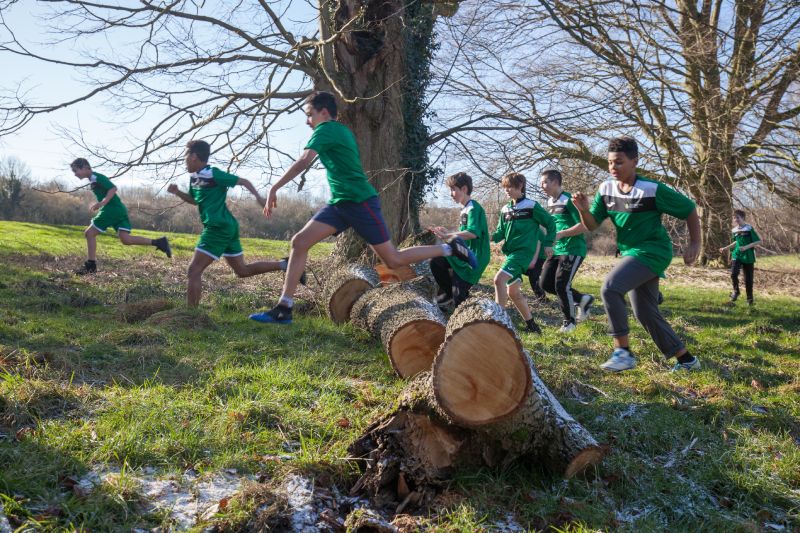
Final Thoughts
In a recent interview, Judith Butler reminded us that the category of “woman” has expanded (Gleeson, 2021), so I reiterate that the topic of women in leadership relative to resilience must not be limiting. And while I know that their gender is not the reason that the women leaders I describe are so effective, perhaps it is one of the reasons they have had such an impact on me. As a woman myself, learning lessons of resilience from leaders with whom I identify has been formative. When writing, I grappled with whether to discuss the balance between motherhood and work responsibilities as a form of resilience. After all, three out of four of these women have children, a total of eight between them. Being raised by a single father myself, however, I wanted to avoid generalizing the relationship between womanhood and parenthood, careful not to perpetuate outdated gender roles. But regardless of gender, it is important to me to point out that three quarters of these women leaders are also mothers, and had to plan their careers accordingly. Knowing this, one might consider the final lesson – empowering others as a form of resilience – and make connections between parenthood and the act of championing others. While we all have the capacity for resilience, these four women can take some credit for mine. In Canada, education is considered a “women-dominated” profession, with the most recent survey indicating that 68% of teachers identify as women (Statistics Canada, 2017). Regardless of profession, I hope that we continue to see the broad spectrum of gender represented in leadership. And regardless of gender, I hope that leaders continue to teach us lessons about resilience.
Boaler, J. (2013). Ability and mathematics: The mindset revolution that is reshaping education. Forum.
Boaler, J. (2015). Mathematical mindsets: Unleashing students’ potential through creative math, inspiring messages and innovative teaching. John Wiley & Sons.
Boaler, J., & Anderson, R. (2018). Considering the rights of learners in classrooms: The importance of mistakes and growth assessment practices. Democracy and Education, 26(2), 7.
Castro, A. J., Kelly, J., & Shih, M. (2010). Resilience strategies for new teachers in high-needs areas. Teaching and Teacher Education, 26(3), 622-629.
Gardner, R., & Stephens-Pisecco, T. L. (2019). Empowering educators to foster student resilience. The Clearing House: A Journal of Educational Strategies, Issues and Ideas, 92(4-5), 125-134.
Gibbs, S., & Miller, A. (2014). Teachers’ resilience and well-being: A role for educational psychology. Teachers and Teaching, 20(5), 609-621.
Gleeson, J. (2021). Judith Butler: “We need to rethink the category of ‘woman.’” https://www.theguardian.com/lifeandstyle/2021/sep/07/judith-butler-interview-gender
Herrman, H., Stewart, D. E., Diaz-Granados, N., Berger, E. L., Jackson, B., & Yuen, T. (2011). What is resilience?. The Canadian Journal of Psychiatry, 56(5), 258-265.
Ledesma, J. (2014). Conceptual frameworks and research models on resilience in leadership. Sage Open, 4(3).
MacDougall, A., Valley, J., & Jeffrey, J. (2020). Diversity disclosure practices. Osler. https://www.osler.com/osler/media/Osler/reports/corporate-governance/Diversity-and-Leadership-in-Corporate-Canada-2020.pdf
Mansfield, C. F., Beltman, S., Broadley, T., & Weatherby-Fell, N. (2016). Building resilience in teacher education: An evidenced informed framework. Teaching and Teacher Education, 54, 77-87.
Masten, A. S., & Reed, M.G.J. (2002). Resilience in development. Handbook of positive psychology. University of Minnesota.
McKinsey & Company. (2020). Women in the workplace. https://wiw-report.s3.amazonaws.com/Women_in_the_Workplace_2020.pdf
Ofsted. (2019). Retaining the current grading system in education. https://assets.publishing.service.gov.uk/government/uploads/system/uploads/attachment_data/file/936220/Retaining_the_current_grading_system_-_arguments_and_evidence_290419.pdf
Steward, J. (2014). Sustaining emotional resilience for school leadership. School Leadership & Management, 34(1), 52-68.
TIME. (2020). 100 women of the year. https://time.com/100-women-of-the-year/




